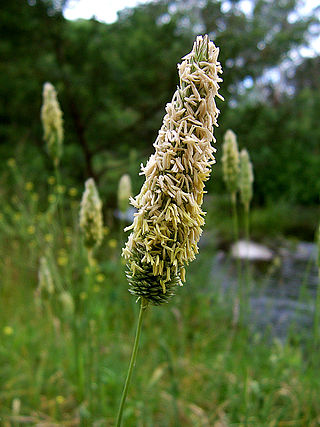
Poaceae or Gramineae is a large and nearly ubiquitous family of monocotyledonous flowering plants commonly known as grasses. It includes the cereal grasses, bamboos and the grasses of natural grassland and species cultivated in lawns and pasture. The latter are commonly referred to collectively as grass.

Arundo is a genus of stout, perennial plants in the grass family.

Cymbopogon, also known as lemongrass, barbed wire grass, silky heads, Cochin grass, Malabar grass, oily heads, citronella grass or fever grass, is a genus of Asian, African, Australian, and tropical island plants in the grass family. Some species are commonly cultivated as culinary and medicinal herbs because of their scent, resembling that of lemons . The name cymbopogon derives from the Greek words kymbe and pogon "which mean [that] in most species, the hairy spikelets project from boat-shaped spathes." Lemongrass and its oil are believed to possess therapeutic properties.
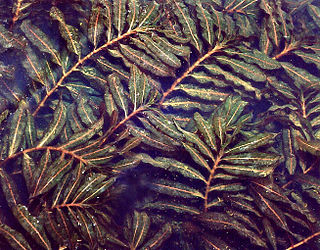
The Potamogetonaceae, commonly referred to as the pondweed family, is an aquatic family of monocotyledonous flowering plants. The roughly 110 known species are divided over six genera. The largest genus in the family by far is Potamogeton, which contains about 100 species.
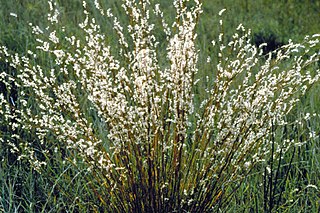
The Andropogoneae, sometimes called the sorghum tribe, are a large tribe of grasses (family Poaceae) with roughly 1,200 species in 90 genera, mainly distributed in tropical and subtropical areas. They include such important crops as maize (corn), sugarcane, and sorghum. All species in this tribe use C4 carbon fixation, which makes them competitive under warm, high-light conditions.

Schizachyrium scoparium, commonly known as little bluestem or beard grass, is a species of North American prairie grass native to most of the contiguous United States as well as a small area north of the Canada–US border and northern Mexico. It is most common in the Midwestern prairies and is one of the most abundant native plants in Texas grasslands.

Ruppia, also known as the widgeonweeds, ditch grasses or widgeon grass, is the only extant genus in the family Ruppiaceae, with eight known species. These are aquatic plants widespread over much of the world. The genus name honours Heinrich Bernhard Rupp, a German botanist (1688-1719). They are widespread outside of frigid zones and the tropics.
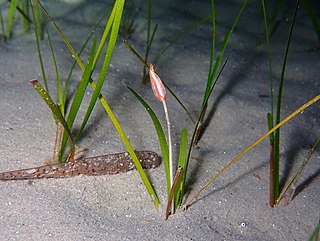
Cymodoceaceae is a family of flowering plants, sometimes known as the "manatee-grass family", which includes only marine species.

Andropogon is a widespread genus of plants in the grass family, native to much of Asia, Africa, and the Americas, as well as Southern Europe and various oceanic islands.

Microstegium is a genus of African, Asian, and Pacific Island plants in the sorghum tribe within the grass family. Browntop is a common name.

Eulalia is a genus of Asian, African, and Australian plants in the grass family.

Apluda is a genus of plants in the grass family native to Asia and to various islands in the Indian and Pacific Oceans.

Schizachyrium is a widespread genus of plants in the grass family. The name is derived from the Ancient Greek words σχίζειν, meaning "to split," and ἄχυρον, meaning "chaff." It refers to either the glume or the toothed lemmas.
Thelepogon is a genus of Asian, African, and Australian plants in the grass family.
Elionurus is a genus of Asian, African, Australian, and Neotropical plants in the grass family.
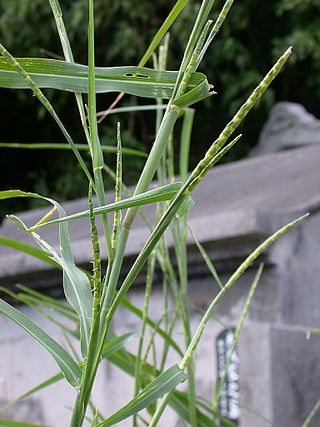
Rottboellia is a genus of African, Asian, and Australian plants in the grass family.

Schizachyrium tenerum is a species of grass known by the common name slender little bluestem, or slender bluestem. It is native to the Americas, where it occurs in North, Central, and South America. In North America it can be found in the southeastern United States and much of Mexico.
Robert Keller was a Swiss botanist from Oberembrach, a village near Winterthur.












